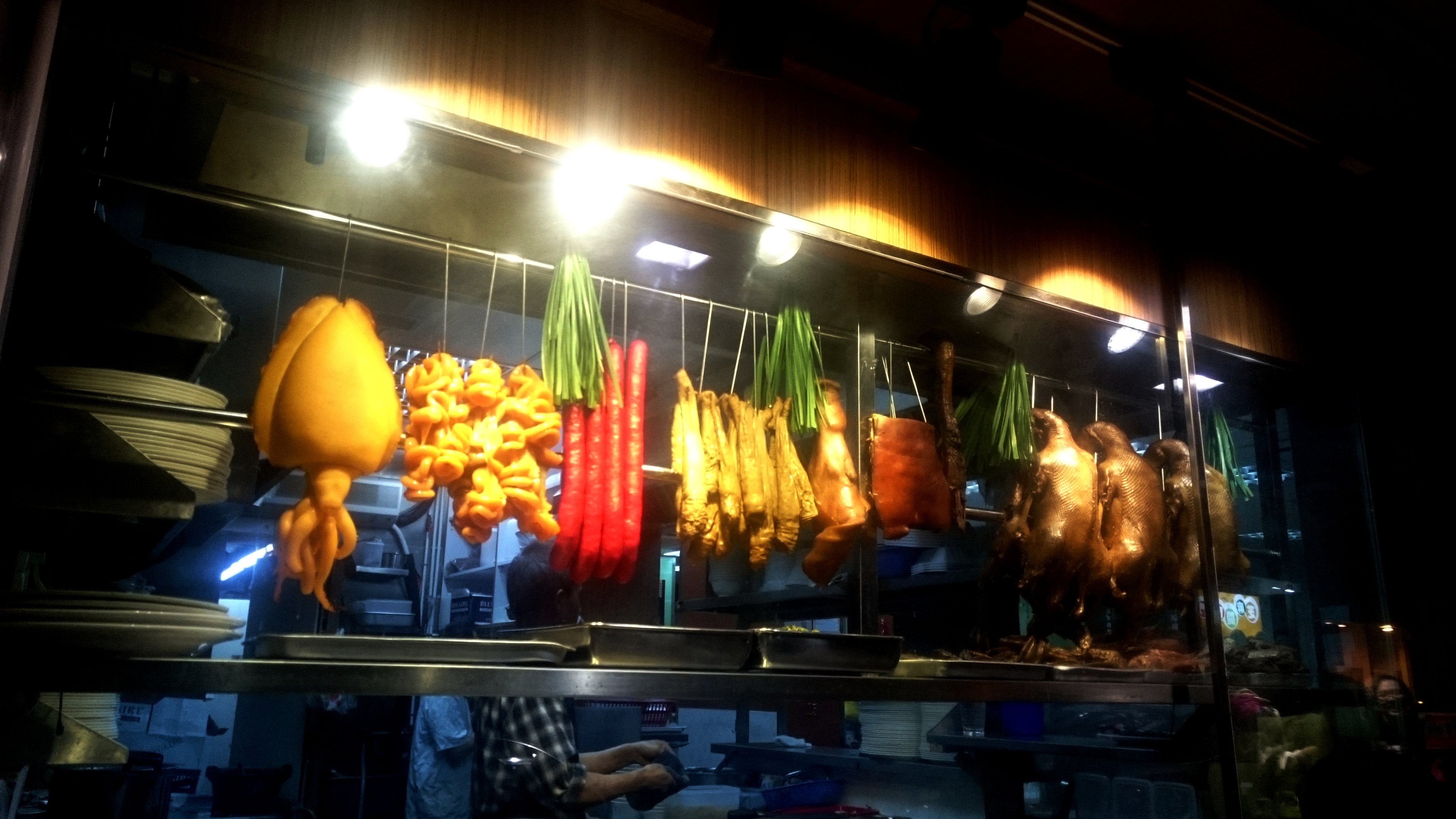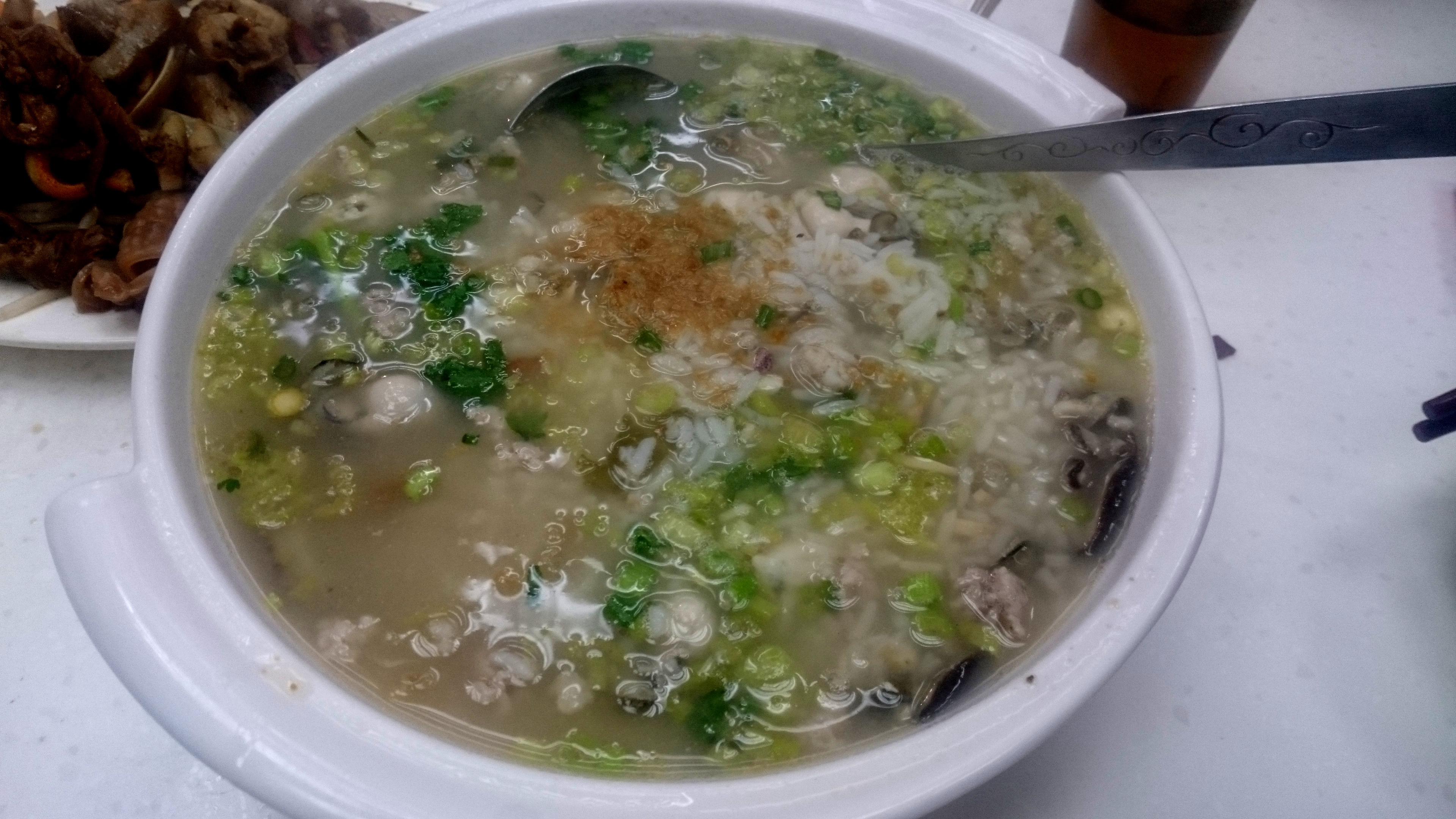Daa Laang on:
[Wikipedia]
[Google]
[Amazon]
Daa Laang () refers to a night-time meal in
 The traditional way to order the food is to choose the dish of choice in front of a server, who then marks it down for customers. The Daa Laang is then made and sent to the table. Because of its convenience and unique taste, the traditional dish is fast expanding into other parts of the country, including
The traditional way to order the food is to choose the dish of choice in front of a server, who then marks it down for customers. The Daa Laang is then made and sent to the table. Because of its convenience and unique taste, the traditional dish is fast expanding into other parts of the country, including "潮汕美味大搜索"
Retrieved 18 June 2012


 One popular dish is the
One popular dish is the
Hong Kong cuisine
Hong Kong cuisine is mainly influenced by Cantonese cuisine, European cuisines (especially British cuisine) and non-Cantonese Chinese cuisines (especially Hakka, Teochew, Hokkien and Shanghainese), as well as Japanese, Korean and Southeast ...
. First emerging in the 1950s, it includes hot and cold Chaozhou dishes.
Origins
Daa Laang originated from Chaozhou and is also called Chaozhou Daa Laang. It was then spread intoHong Kong
Hong Kong ( (US) or (UK); , ), officially the Hong Kong Special Administrative Region of the People's Republic of China (abbr. Hong Kong SAR or HKSAR), is a city and special administrative region of China on the eastern Pearl River Delta i ...
by immigrants from Chaozhou in the 1950s.Shenzhen
Shenzhen (; ; ; ), also historically known as Sham Chun, is a major sub-provincial city and one of the special economic zones of China. The city is located on the east bank of the Pearl River estuary on the central coast of southern province ...
.Retrieved 18 June 2012
Etymology
The term isCantonese
Cantonese ( zh, t=廣東話, s=广东话, first=t, cy=Gwóngdūng wá) is a language within the Chinese (Sinitic) branch of the Sino-Tibetan languages originating from the city of Guangzhou (historically known as Canton) and its surrounding ar ...
and originated in Hong Kong. There are several proposed etymologies.
Proposed etymologies
* In the fiction of theSong dynasty
The Song dynasty (; ; 960–1279) was an imperial dynasty of China that began in 960 and lasted until 1279. The dynasty was founded by Emperor Taizu of Song following his usurpation of the throne of the Later Zhou. The Song conquered the rest ...
and Yuan dynasty
The Yuan dynasty (), officially the Great Yuan (; xng, , , literally "Great Yuan State"), was a Mongol-led imperial dynasty of China and a successor state to the Mongol Empire after its division. It was established by Kublai, the fift ...
, terms such as “da tsim” (Chinese: 打尖; Jyutping: ''daa2 zim1'') and “da dim” (Chinese: 打店; Jyutping: ''daa2dim3''), refere to going to a restaurant for dinner while traveling. Hence, the word “Daa” can refer to eating at a restaurant. In the Teochew dialect
Teochew or Chaozhou (, , , Teochew endonym: , Shantou dialect: ) is a dialect of Chaoshan Min, a Southern Min language, that is spoken by the Teochew people in the Chaoshan region of eastern Guangdong and by their diaspora around the world. ...
, the word “lang” means "people." Thus, Cantonese refer to the Teochew people
The Teochew people or Chaoshan people (rendered Têo-Swa in romanized Teoswa and Chaoshan in Standard Chinese also known as Teo-Swa in mainland China due to a change in place names) is anyone native to the historical Chaoshan region in south ...
as “lang lo” (Chinese: 冷佬; Jyutping: ''laang5 lou2''). Over time, "lang lo" became a slang term, regarding Chaozhou food stalls. Then gradually the term Daa Laang referenced dinner at Hong Kong
Hong Kong ( (US) or (UK); , ), officially the Hong Kong Special Administrative Region of the People's Republic of China (abbr. Hong Kong SAR or HKSAR), is a city and special administrative region of China on the eastern Pearl River Delta i ...
’s Chaozhou stalls.
* In the 1950s, there were many Teochew people
The Teochew people or Chaoshan people (rendered Têo-Swa in romanized Teoswa and Chaoshan in Standard Chinese also known as Teo-Swa in mainland China due to a change in place names) is anyone native to the historical Chaoshan region in south ...
selling late-night supper and marinated food on Hong Kong
Hong Kong ( (US) or (UK); , ), officially the Hong Kong Special Administrative Region of the People's Republic of China (abbr. Hong Kong SAR or HKSAR), is a city and special administrative region of China on the eastern Pearl River Delta i ...
’s streets. They used to carry baskets with poles on their shoulders and then peddled along the streets. They were called the “basket carriers”. The pronunciation of this term in Chaoshan
Chaoshan or Teoswa (; peng'im: ''Dio5suan1'' i̯o˥˥꜖꜖.sũ̯ã˧˧ is a cultural-linguistic region in the east of Guangdong, China. It is the origin of the Min Nan Chaoshan dialect (). The region, also known as Chiushan in Cantonese, c ...
is like “Daa Laang”, so then Hong Kong people call them the Daa Laangs. In time, “Daa Laang” became the term that represents eating Teochew cuisine
Chaoshan cuisine, also known as Chiuchow cuisine, Chaozhou cuisine or Teo-swa cuisine, originated from the Chaoshan region in the eastern part of China's Guangdong Province, which includes the cities of Chaozhou, Shantou and Jieyang. Chaosha ...
in Hong Kong.
* At that period, many gangs dined and dashed at the Chaozhou stalls. A Chaozhou gang formed in response to watch for the rival gangs. Once they found someone who came for a meal, they would yell “hit them!” to alert others. “Daa Laang” in Teochew dialect means "hit them", thus gradually people related Daa Laang and Chaozhou cuisine together.
Dishes
Dishes include a variety of cold cuts and spicy dishes originating from the food stalls in Chaozhou. Marinated food, seafood, pickled products, and cooked dishes are the four main types of Daa Laang.marinated
Marinating is the process of soaking foods in a seasoned, often acidic, liquid before cooking. The origin of the word alludes to the use of brine (''aqua marina'' or sea water) in the pickling process, which led to the technique of adding flavor b ...
or Chaozhou soy-sauce goose
A goose ( : geese) is a bird of any of several waterfowl species in the family Anatidae. This group comprises the genera ''Anser'' (the grey geese and white geese) and '' Branta'' (the black geese). Some other birds, mostly related to the ...
. People usually order marinated tofu
Tofu (), also known as bean curd in English, is a food prepared by coagulating soy milk and then pressing the resulting curds into solid white blocks of varying softness; it can be ''silken'', ''soft'', ''firm'', ''extra firm'' or ''super f ...
and cuttlefish together with the goose or directly order a marinated combination.
Pepper and salt fried food served with chili is also popular. Chefs will first fry the particular food (usually a light food like tofu or squid) and then re-fry it with pepper and salt.
Popular hot items include oyster
Oyster is the common name for a number of different families of salt-water bivalve molluscs that live in marine or brackish habitats. In some species, the valves are highly calcified, and many are somewhat irregular in shape. Many, but not ...
congee, which also adds chopped meat and dried flatfish into the congee; pan fried oyster cake, adding oyster meat into an egg and frying it; lemon
The lemon (''Citrus limon'') is a species of small evergreen trees in the flowering plant family Rutaceae, native to Asia, primarily Northeast India (Assam), Northern Myanmar or China.
The tree's ellipsoidal yellow fruit is used for culin ...
flathead mullet, adding lemon pieces into the mullet and steaming; Chinese kale and beef served with special Satai sauce.
Popular cold items include iced cockle - a first boiled and then frozen cockle which is served with a sauce made with garlic, sugar and vinegar
Vinegar is an aqueous solution of acetic acid and trace compounds that may include flavorings. Vinegar typically contains 5–8% acetic acid by volume. Usually, the acetic acid is produced by a double fermentation, converting simple sugars to eth ...
- and iced crab, which is first boiled and later frozen.
References
{{reflist Hong Kong cuisine Chinese cuisine